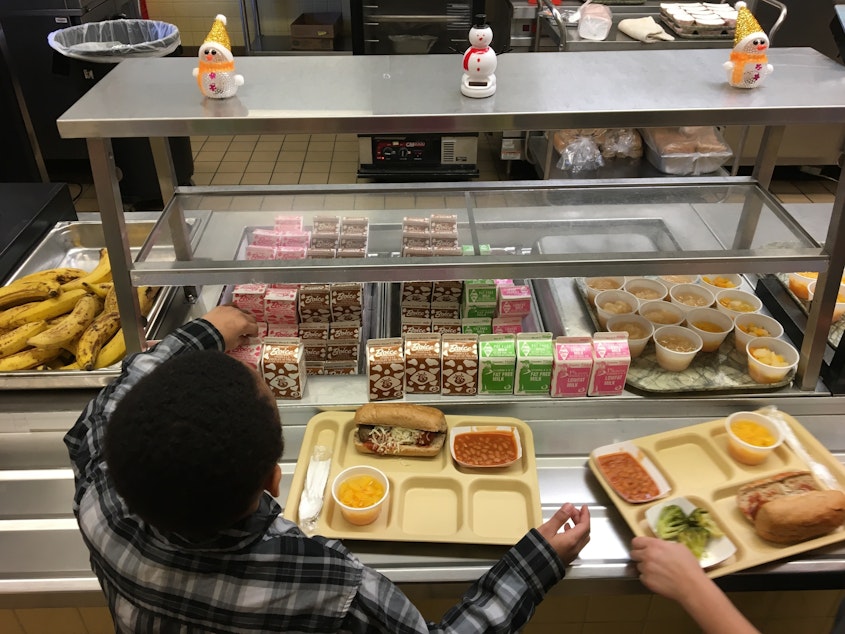Kids don't have enough time to eat lunch, Washington state audit finds

Auditors timed how long elementary students got at the lunch table at 31 schools in Washington state.
They found students rarely got the 20 minutes that studies say kids need to eat a well-balanced meal.
The performance audit came at the request of the Office of Superintendent of Public Instruction, and follows years of complaints from parents and teachers that students — especially in the early grades — have to rush through lunch, and often come away hungry.
“It takes forever to get through the line," said Caressa Milgrove, a Vancouver parent whose son is in fourth grade.
"By the time they get through the line and find a table, they have just a couple minutes to eat," she said. "And that ends up straight in the trash because they can't bring it home. They just have to run outside to recess.”
That aligns with auditors' findings that, although schools may schedule 20 minutes or more for lunch, much of that time gets eaten up before kids have time to take the first bite.
Kids tend to eat the more caloric, highest-fat items first, said senior performance auditor William Wright.
Sponsored
"They reach for the chicken nuggets and the corn dogs and the pizza, and save those vegetables and fruit for last," Wright said. Even so, students often run out of time for the fruits and veggies.
The situation has long been observed to fall hardest on low-income children, who are more likely to rely on free or reduced-price school lunches. And hot lunch lines can be longest — and eat up the most lunch time — at schools that serve predominantly low-income students, exacerbating the problem.
Auditors said principals they surveyed usually overestimated how much time students had to eat, and had never taken the time to measure whether children were actually seated for 20 minutes, as the state recommends.
The auditor's office also found that few schools offered recess before lunch, which has been shown to increase children's appetites and prevent them from rushing through their meals to have more time to play.
The report offers suggestions, like make longer lunches and schedule recess before lunch.
Sponsored
Rearranging the lunch line to make it more efficient, assigning children to specific cafeteria tables, and staggering lunch times have all been shown to give students more time to eat, auditors found.
"Other schools and states have found solutions to these challenges," auditors wrote in their findings, and encouraged building leaders and districts across the state to do the same.
Auditors also asked state schools office to make 20 minutes of seated lunch time a requirement for schools, not just a recommendation.
Chris Reykdal, the superintendent of Washington schools, agreed with the findings.
"Students who have access to nutritious meals and the time to consume those meals are better equipped to meet educational milestones," Reykdal wrote in a response letter.
Sponsored
"We plan to move forward with the rule process to define a 20-minute seated lunch time for all students and require recess before lunch for elementary students," he said.




